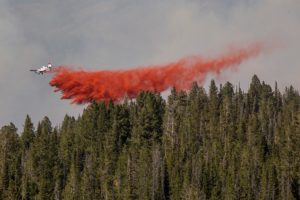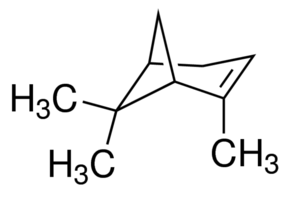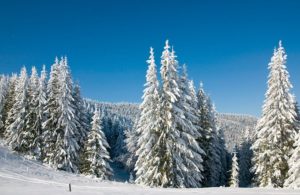It’s that time of year again! Many of you are probably putting up Christmas trees this weekend- some real, some fake. If you’re using a real tree there’s a good chance it could be an immature Norway spruce, Picea abies. This is the same species of tree used for the Rockefeller Christmas tree each year but yours probably isn’t 75 ft tall!

How do we make sure all the candles don’t set fire to the trees?
Stores that have Christmas trees indoors must be careful that they comply with health and safety with regards to fire hazards. As a precaution, many places spray or paint their trees with fire retardant. Fire retardant is a blanket term that covers various different substances. Aluminium hydroxide is a common component; when it is exposed to the high temperatures of a fire it decomposes to aluminium oxide, releasing water in the process. This is an endothermic process so cools whatever material it is in as well as leaving a protective residue on the surface. Other commonly used products aim to interrupt the radical oxygenation reactions that occur in combustion. They do this by using chlorinated or brominated materials that, upon thermal degradation, form HCl or HBr. These can then react with hydrogen or hydroxide radicals, inactivating them and forming a much less reactive halogen radical.

Pine forests smell so good….
Christmas trees aren’t just for visual purposes, often their scent is what makes getting a natural tree so popular. The natural scent of a pine forest is a complex mix of molecules produced by the trees with molecules from the soil and air. This is why pine scented candles rarely smell like an actual forest. Pinene is the dominant molecule contributing to the smell of conifers. It’s a monoterpene that’s often found alongside limonene in the resin of conifers. The terpenes in the resin play an important role in discouraging herbivores who may otherwise graze on damaged bark- any pine flavour crisps you might find around this time of year are unlikely to taste nice despite advertising! On hot summer days these volatile terpenes are released into the atmosphere and can play a role in cloud seeding, which may then help to cool down the forest. This is an increasingly important factor to consider with global warming accelerating at the current rate.

Real Vs fake? What’s better for the environment?
A classic annual debate is whether a fake or a real Christmas tree is better for the environment. Fake Christmas trees can last upwards of a decade if stored properly. However the materials and methods used to make them in the first place seem an unnecessary burden upon the environment when real trees are so widely available. Those who argue for real trees often state that they are carbon neutral. Whilst this is the case for the growth and then decay of the tree itself, it fails to take into account the farming of the trees; the heavy equipment needed to cut them down and transport them runs on fossil fuels and the trees themselves are often sold in plastic netting. In the end it’s a choice we have to make ourselves as we try to reduce our environmental impact. Happy holidays everyone!

